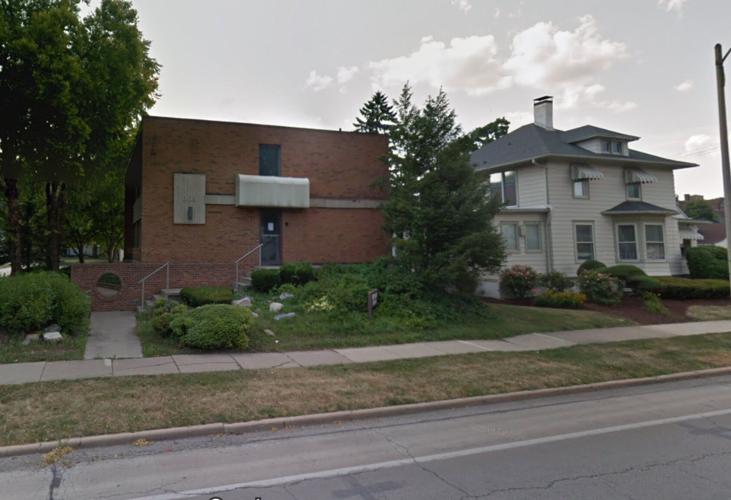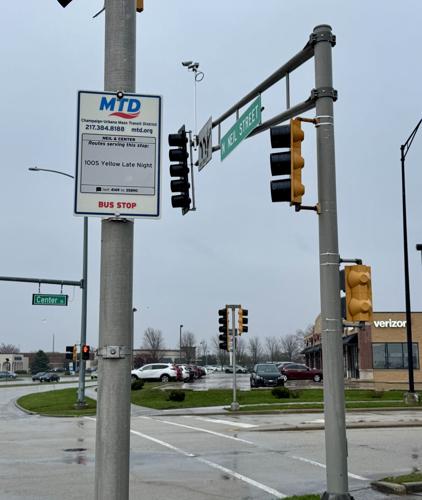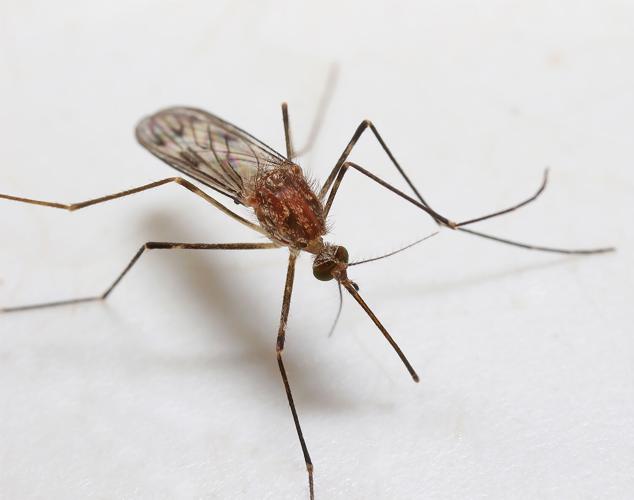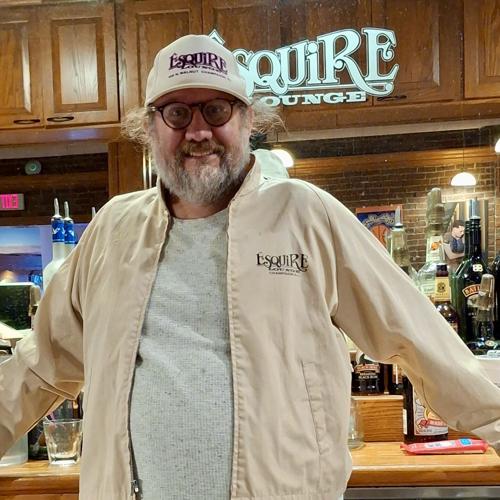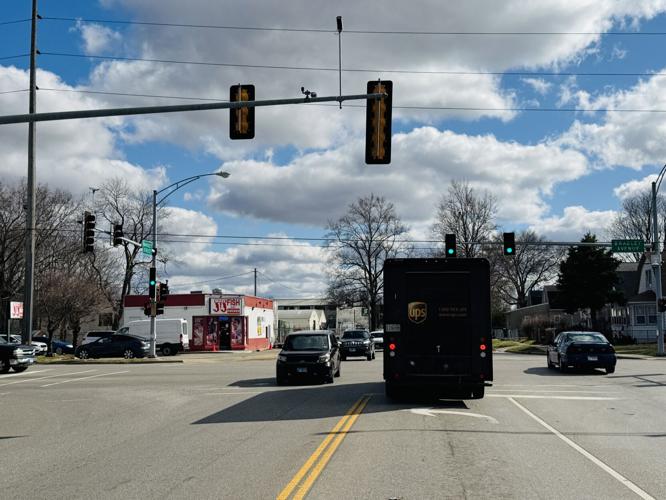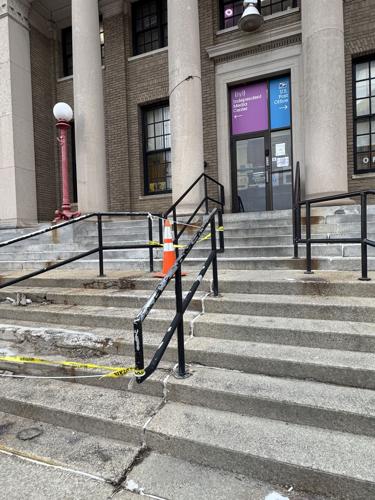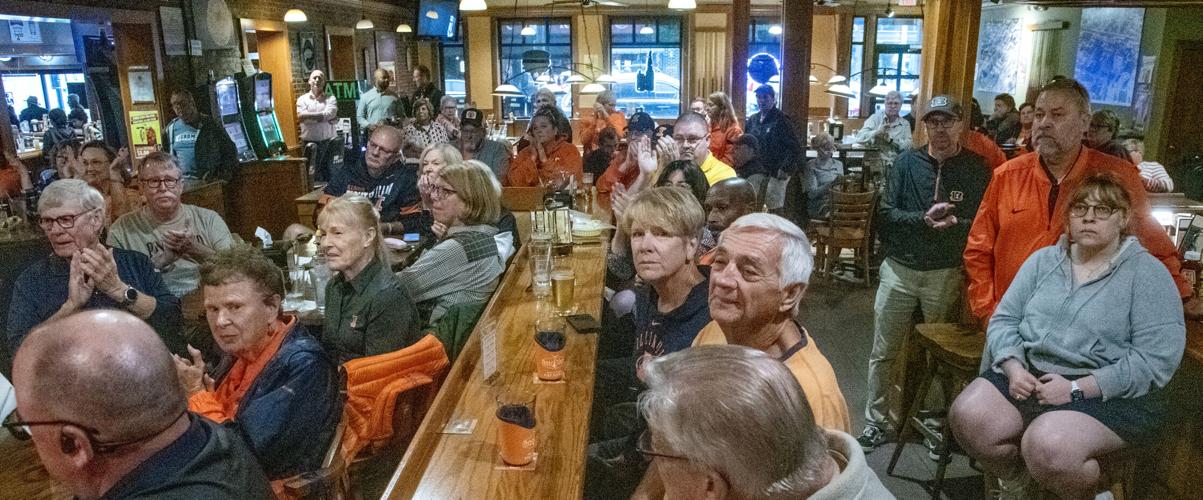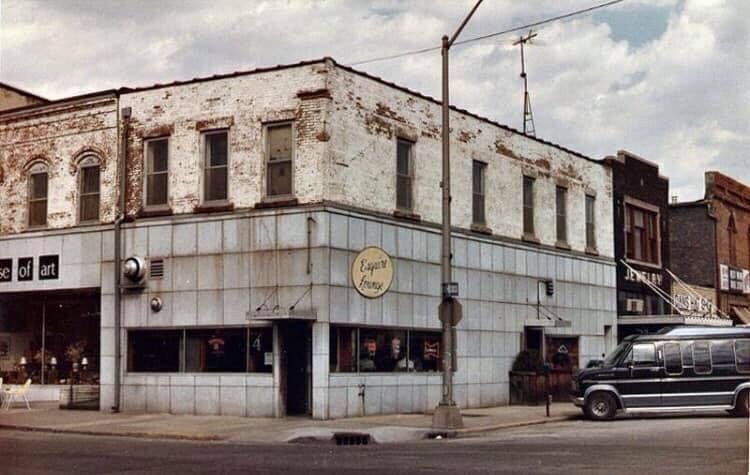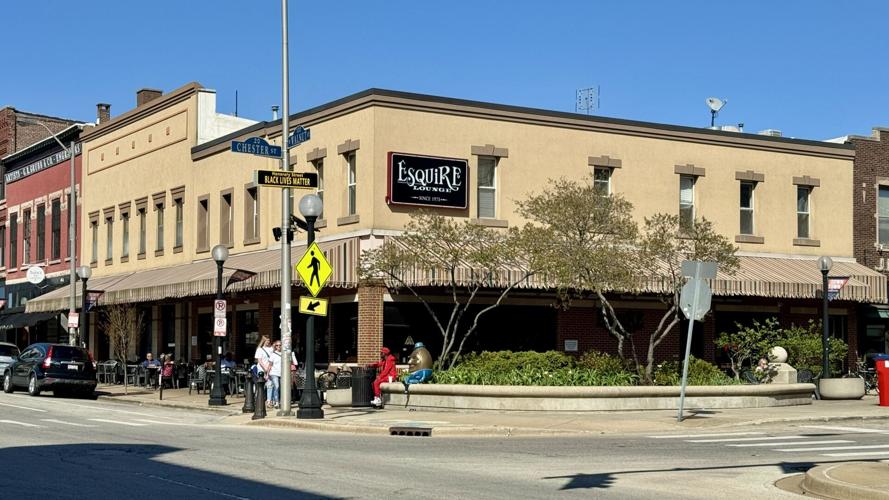Drop in a question of your very own BY CLICKING HERE or by emailing Kathy Reiser at mailbag@news-gazette.com.
A little of everything in this week’s Mailbag: Whether spraying to control mosquitoes may harm pollinators … why a favorite statue is gone from Hessel Park … when a busy stretch of Route 45 will be repaved … why a local supermarket is locking up its laundry detergent and body wash … and how the C-U MTD will be upgrading bus stops near Market Place Mall.

Adding bus shelters near Market Place Mall
“With fixed-route bus service ending on Market Place Mall property this summer, will bus shelters be built for the nearest stops at Neil and Center?”
That intersection already has a couple of unimproved late-night bus stops near the former Za’s and Old Chicago restaurants.
C-U Mass Transit District Managing Director Karl Gnadt says MTD plans to install concrete pads as soon as possible at Neil and Center. “We’ve contracted with an engineering firm to do the design work. There is a challenging sidewalk situation on the east side of Neil Street that we are discussing with the city, and shelters will eventually be installed on those pads.”
As Jana Wiersema reported in late March, the MTD will be tweaking the Red and Yellow bus routes to move its Market Place Mall bus stops off mall property this summer. The reason: Brookfield Properties, the mall’s parent company, had asked the transit district to pay $1,500 per month to help address bus-related “wear and tear” on roads within the mall property. The MTD Board said “no,” believing it would set a bad precedent to allow business owners to charge the MTD for access to their property.
Gnadt said the MTD’s service to the Champaign Walmart and Ashland Park subdivision “will be significantly enhanced as a result of this forced change. It created an ‘opportunity’ for us to realign the routing and schedules to provide additional service to both Walmart and Ashland Park. It’s possible that Meijer could see some additional service, as well.”

Do mosquito sprays harm beneficial insects?
“I understand products used by companies that spray for mosquitoes will kill all insects that come into contact with the spray, including beneficial pollinators. If so, are there alternatives to that?”
Believe it or not, Illinois’ mosquito season usually begins in April. Chris Stone, director of the Medical Entomology Lab at the Illinois Natural History Survey, told us residential backyard mosquito control by private companies can take a number of different forms.
“The use of so-called barrier sprays — that is, the application of a residual insecticide to vegetation or other surfaces where mosquitoes could be resting during the day — is quite common. These often make use of pyrethroid insecticides, which are not specific to mosquitoes, and could potentially affect other insects as well if they were to come into contact with the treated foliage.”
If those who are spraying for mosquito control can avoid spraying flowering plants or gardens, “unintentional impacts on pollinators may be minimized, but more research on so-called ‘non-target’ effects is needed,” Stone said.
When it comes to municipalities that spray to control mosquitoes, “a large component is typically the application of larvicides [for example Bacillus thuringiensis subsp. israelensis (Bti)], or an insect growth regulator, to bodies of water where mosquito larvae develop, like catch basins.
“In some cases — for instance, when the abundance of West Nile virus-positive mosquitoes is particularly high — they may also use an ultra-low volume (ULV) insecticide spray, which uses small amounts of insecticide to generate a cloud of tiny droplets that contact mosquitoes in flight. These formulations are thought to break down rapidly, and by spraying at or after dusk to be able to minimize harm to day-active pollinators.”
One of the best means of reducing mosquito populations is to reduce the ability of their larvae to develop, by removing standing water. The U.S. Centers for Disease Control recommends that anything that can hold water in the yard should be either turned over, removed or covered; for larger bodies of water or places that can't be covered, larvicides may be used.
“You can also contact your local health department about standing water outside of your backyard, such as in neglected swimming pools, discarded tires or drainage ditches,” Stone said.


Cleaning, personal-care items locked up
“Why has the Mattis Avenue Schnucks installed locked shelving units for laundry detergent, skincare products and some other items?”
Schnucks Director of Safety Matthew Redmond said these items are frequent targets of organized retail criminal organizations, “and in order to cut down on theft and keep prices low for our customers, we have chosen to put them behind lock and key.”
A push-button is mounted on the shelving unit. When customers want to buy items from one of the locked shelves, they press the button and a Schnucks staff member comes to unlock the cabinet-style shelving unit.
Across the country, retailers including Target and Walgreens have opted to do the same thing at some of their stores. Thieves, often working in groups, steal large quantities of these types of non-perishable items and sell them on Amazon, eBay and other e-commerce websites. For those who get away with the thefts, it can be a lucrative business; whatever buyers will pay for these items on the “gray market” is pure profit.
Redmond said Schnucks has installed locked shelving “in areas where we’ve seen increases in organized retail crime activity. Each of our stores is evaluated individually based on theft patterns/behaviors. This is something that we have seen throughout the Midwest, where we operate 114 stores.”
In response to a late-2024 Mailbag question, we reported that infant formula is another frequent target for organized theft rings — and at that time, at least one local supermarket (Meijer in Urbana) was requiring customers to request and purchase formula and related products at the service desk.

Upgrading property on North Cunningham Avenue
“What’s going to open at the former adult bookstore on the east side of U.S. 45 just north of Urbana?”
County property records show the property was sold to Taylor Construction and Design in November 2024. The firm’s co-owner, Wes Taylor, said they plan to turn the building into an office and showroom for the construction business — pending issuance of official permits.

When will Route 45 South be repaved?
“When is the Neil Street/Dunlap Avenue repaving supposed to start? Last I heard, it was on the schedule for fall 2024.”
Work on that segment of U.S. 45 in Champaign and Savoy is now on the Illinois Department of Transportation’s list of road projects for the 2025 construction season. IDOT engineer Kensil Garnett said work is expected to begin sometime this summer, pending receipt of “an awardable bid.”
The official project description is “3.038 miles of standard overlay with ADA improvements and traffic signal modernization from Springfield Avenue in Champaign to Curtis Road in Savoy. Project is on the April 25, 2025 letting. The programmed cost for the project is $11.8 million. The project has a completion date of Aug. 1, 2026 plus 10 working days.”


Fixing hazardous stairs at downtown Urbana P.O.
“The stairs at the downtown Urbana post office are in terrible condition. Will they be repaired soon?”
U.S. Postal Service spokesperson Tim Norman tells us “a work order has been done to fix the steps at this facility in Urbana.” There’s no word on a timetable for the repairs. I asked, but have not yet heard back, whether the work order was submitted to the facility’s landlord (the Urbana Champaign Independent Media Center), or to the postal service’s own maintenance division.

'No left turn' lighted boxes needed on Market Street?
“Could the City of Champaign install electronic ‘no left turn’ signs on north- and southbound Market Street, so they would flash when a train is crossing Bradley Avenue?”
The reader went on to say she has traveled Market Street twice a day for 11 years. “And three to four times a week, a train is crossing the tracks in the morning and at night, so those in the left-turn lane in both directions will speed up and cross in front of cars in the lane going south or north on Market Street.
“With a flashing ‘no left turn’ light, those going north or south (could) see it from a distance and … take an alternative side road through the neighborhood, instead of clogging up Market Street,” the reader suggests.
I’ve been caught at that intersection myself — sometimes sitting through a couple of traffic-light cycles — and can vouch that some motorists on Market Street seem to lose their minds when a train prevents normal traffic flow.
Champaign Public Works’ Kris Koester checked into the possibility of adding illuminated ‘no left turn’ signs at that intersection. “In reviewing the Manual on Uniform Traffic Control Devices (MUTCD), the preemption at railroad crossings (RR) should be within 200 feet of a RR at-grade crossing,” he wrote. “For comparison, the stop bar-to-stop bar distance between Market Street and the RR is 685 feet”
Electronic ‘no left turn’ signs are activated through railroad crossing preemption, which also controls gate arms and warning devices. Because the Market and Bradley intersection doesn't fall within the specified distance for RR preemption, he said there would be no way to automatically activate the changeable sign.

After Saturday night’s game between Illinois and Michigan State ended, Terrence Shannon Jr.’s jersey was brought down and turned right-side up.
Placement of TSJ’s banner at State Farm Center
“Why was Terrence Shannon, Jr.’s banner at State Farm Center placed next to Coach Theresa Grentz’s banner rather than those of other players? Will the jerseys be rearranged?”
That was a temporary placement for the final two home games, according to UI Division of Intercollegiate Athletics spokesperson Derrick Burson. He said the full ring of banners “will be adjusted accordingly for next season.”

Statue missing from Hessel Park
“A statue in the SW part of Hessel Park is now gone, and its plaque appears to have been broken so that the name of the piece is missing. What happened to it?”
Not to worry. Champaign Park District Executive Director Sarah Sandquist says Ben Pierce’s Sprout sculpture has been temporarily removed for refurbishment by GS Custom Studio. She expects it to be back in its usual spot in a few weeks.
The 9-foot-tall, sparkly green steel sculpture was installed at Hessel Park in late 2019. Barham Benefit Group was Sprout’s original sponsor and continues to sponsor maintenance through the Champaign Parks Foundation. The arts group 40North will work with CPD to replace Sprout’s plaque. Sandquist said the type of plaque that was installed with Sprout is being phased out in favor of more permanent brass plaques.
What happens to Monday’s comics, puzzles?
“With the News-Gazette’s Monday edition going online-only, will you include Monday 's comics, daily crossword and sudoku in the weekend print edition?”
No, but publisher Paul Barrett says they will be in the Tuesday print edition — as will Loren Tate’s weekly columns that recently have been published in the Monday papers.
For readers who may have missed it, Barrett announced on Tuesday of this week that the Monday edition of the News-Gazette will be published in its online format only, starting April 7. If you are a digital subscriber, check out the announcement here.
The Tuesday through Saturday editions will continue to be published in both print and e-edition formats.

Where did WCIA’s Theodora Koulouvaris go?
“I haven’t seen WCIA’s Theodora Koulouvaris on the air lately. Where did she go?”
Her LinkedIn profile shows she left her job as a capitol reporter at WCIA in February of this year. Also in February, she took a position as Outreach and Constituent Services Liaison at the office of U.S. Rep. Raja Krishnamoorthi, a Democrat serving Illinois’ 8th Congressional District northwest of Chicago. Koulouvaris’ WCIA bio says she graduated summa cum laude from DePaul University in 2022, and previously had served as an intern in Krishnamoorthi’s office.

Esquire’s 50th – call for memorabilia
Long-time readers know I have a soft spot for both the Champaign County History Museum and for locally owned, one-of-a-kind businesses that have been around for decades.
Esquire Lounge co-owner Jackie Sampson says the popular bar and restaurant in downtown Champaign will be celebrating its 50th anniversary on Saturday, May 24, complete with live bands, food and drink specials, and a 50/50 raffle to benefit the history museum.
Townies of a certain age may recall that there was an Esquire Liquors at the corner of Walnut and Chester streets prior to 1975. But that year is when Bob Osiek, Joe Donahue and Pedro Heller purchased the business and began remaking it into the Esquire Lounge we know today.
Sampson said she’s seeking pictures or other memorabilia to scan, photograph or borrow for the celebration: photos of people celebrating there, old T-shirts or jackets with the bar’s name on them, trinkets such as Esquire-branded bottle openers, coolers or signs — just about anything that helps tell the story of one of downtown Champaign’s most beloved watering holes.
She said beer companies used to provide a lot of co-branded giveaway items, and once in a while a patron or visitor will bring in one of those items to show the staff. She recalls someone bringing in a high-quality “Esquire and Leinenkugel” jacket from the 1970s, and said “there are a lot of old (Esquire) golf-outing shirts out there. And I’m sure there’s a lot of stuff we don’t even know about, that’s been lost” over the past 50 years of the business’ history.
“We just wanted to put some of that stuff out on display” during the anniversary celebration, if people are willing to lend their items for a few days, she said. And if anyone has memorabilia they’d like to donate outright, she said the bar staff will happily arrange to get it to the Champaign County History Museum.
Items may be dropped off at The Esquire during business hours, and should include the lender’s name and contact information — plus info on whether they want the item(s) to be returned to them. Potential memorabilia lenders/donors also may call the bar at 217/398-5858, and speak with Jackie or Paul about their items.

Why was commercial building moved, back in the day?
“In the 1980s, a small commercial building was moved from the area between Huntington Tower and Royse & Brinkmeyer’s offices … to 303 S. State Street. Why was that building moved rather than demolished, and then demolished not terribly long after that?”
Is it Huntington Tower or Huntington Towers?
Either way, Royse & Brinkmeyer CEO Collin Carlier said he “can’t confirm why the commercial building immediately west of Huntington Towers needed to be moved, but perhaps the expansion of Huntington Towers necessitated the move of the commercial building and John Royse thought the building still had life and could remain in use on an nearby site.”
Carlier said the building housed Royse Wagner Advertising during its State Street years. “It was removed in 2017 after not being used for several years, and with the intent to bring new residences to the site.”
The reader recalls that the commercial building “was still next to the tower when I moved into my apartment in July 1987” … so moving it to 303 S. State ended up extending its useful life by about 30 years.

No plate readers on transit buses
“Rumor has it that C-U MTD buses are now equipped with license-plate readers. That can’t be true, can it?”
“Rumors are rarely true,” said Karl Gnadt, the mass transit district’s managing director. “No, of course our buses do not have license-plate readers.”
He said all of MTD’s service vehicles, including buses, are equipped with external video cameras, and have been for more than 20 years. “They are for accident and incident reviews.”

